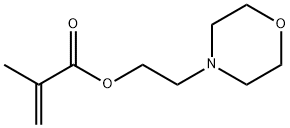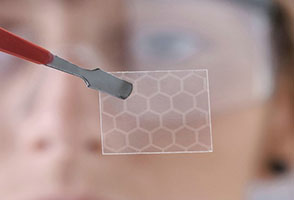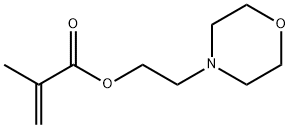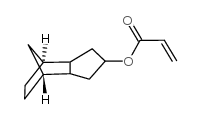| Identification | ||
| Name |
|
2-N-Morpholinoethyl Methacrylate
|
|
Synonyms |
|
2-Morpholinoethyl 2-Methylprop-2-Enoate 2-Methylprop-2-Enoic Acid 2-Morpholinoethyl Ester 2-Methylacrylic Acid 2-Morpholinoethyl Ester |
|
|
||
| Molecular Structure |
|
 |
|
|
||
| Molecular Formula |
|
C10H17NO3 |
| Molecular Weight |
|
199.25 |
| CAS Registry Number |
|
2997-88-8
|
|
EINECS |
|
221-069-5 |
| Properties | ||
| Desity |
|
1.046g/cm3
|
|
Boiling point |
|
291.738°C at 760 mmHg |
|
Flash point |
|
130.239°C |
| Safety Information | ||
|
Hazard Codes |
|
Xi
|
|
Risk Statements |
|
20/21/22-36/37/38-36 |
|
Safety Statements |
|
26-36 |
2-N-Morpholinoethyl Methacrylate description:
2-N-Morpholinoethyl methacrylate is a polymer compound with an active hydroxyl group. It is soluble in organic solvents and reacts with acids to form esters. 2-N-Morpholinoethyl methacrylate has a high degree of reactivity and can be used to create polymers that are biocompatible and non-toxic, such as polymer film. This product can be used in the manufacture of conjugates with other substances by using a process called crosslinking.
2-N-Morpholinoethyl Methacrylate uses:
2-N-Morpholinoethyl Methacrylate functions as a co-monomer used in dentin adhesive formulation control with neutralization capability.









